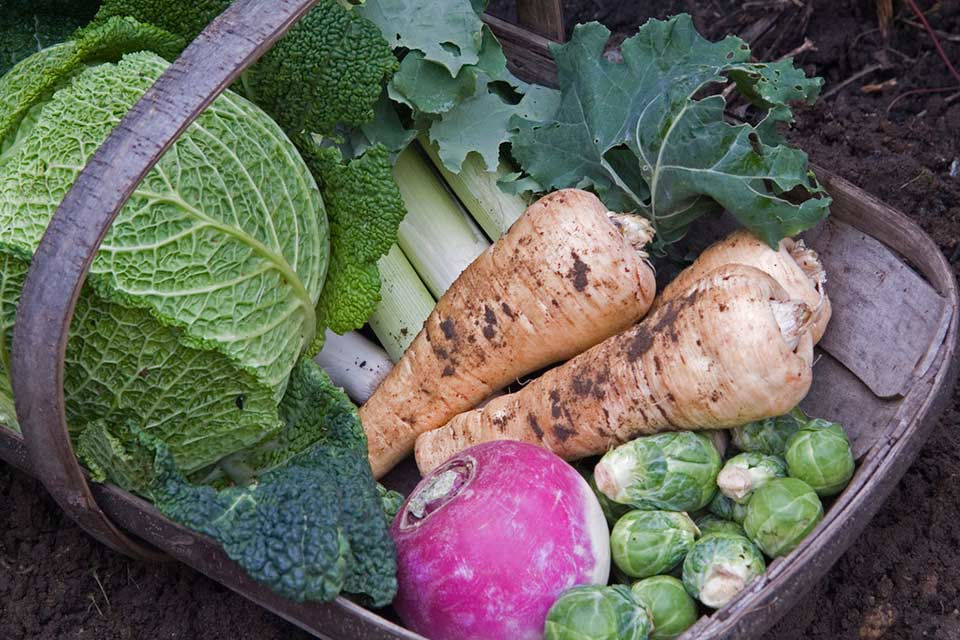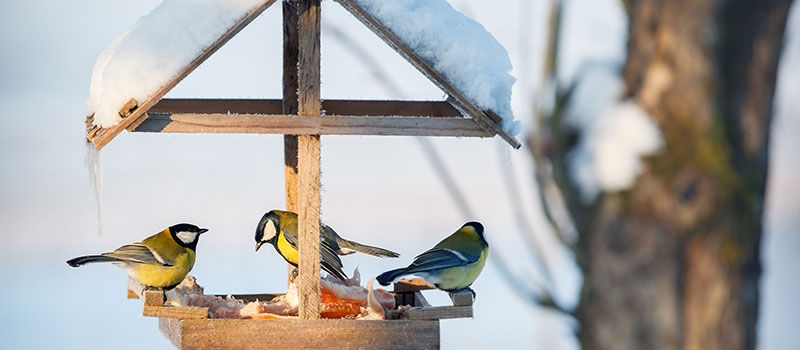
It's happening. The leaves are falling and the days are getting colder and shorter. It's officially autumn... and soon it will be winter. What does this mean for your garden? You might be thinking you just have to leave your garden to it's fate, but that's not true. There is still plenty you can do in your garden at this time of year. We've put together a few of our favourite tips to keep your green fingers busy and also ensure you have a thriving garden to work on come spring.
6 Top Tips for Cold Season Gardening
1. Pick the right plants
There is plenty of produce you can grow at this time of year, you just need to choose the right plants to suit the conditions at this time of year. Here are a few examples of winter greens you could grow:
Brassicas
Spinach
Radicchio
Kale
Rainbow Chard

2. Plant for spring!
Along with planting things to grow now, you can also look to the future. Getting your flowering bulbs in now means that, come spring, your garden will burst into life and colour (and if you forget what you planted, it will be a nice surprise!) Some vegetables like broad beans, garlic and overwinter onions can also be planted in October.

3. Amend your soil
Now is the best time to work on a clay (heavy) soil; turn it up (literally 'turning' it - bringing some below-surface soil to the surface, breaking it up) and add some manure and compost to improve the structure. You can add organic matter such as shredded leaves - there should be plenty of these lying around! Leaving some old roots can also help fix nitrogen in the soil, which will feed your crops the following year.
If you add compost, avoid using a peat-based compost (not only because of it's environmental impact), but because it's very light when it dries out - this will make your soil much more susceptible to wind erosion!

4. Protect your soil
Your soil could be left at the mercy of the weather unless you protect it. This means rain and wind erosion could strip your soil of its fertile top layer. Planting green manure crops like rye, peas, mustard, forage peas, etc that will grow until winter and aerate the soil with their roots and will stop the weeds from growing back. The roots and plant cover will also protect the soil and keep it in place.
Even if you don't have opportunity to plant anything in the soil, never leave it bare. Cover it with straw, mulch, even a plastic cover is better than nothing!

5. Bring potted plants indoors
If you've got any potted plants that are on the delicate side, bring them indoors. Even if you just bring them in to avoid any frosts, it could be the difference between life and death for some plants. Sharing is caring, so share your roof with your green friends. Add some Christmas decorations to them and they can make your home feel very festive!
Make sure to acclimatise your plants to indoor living, and only bring them in at night for the first few days, then gradually increase the time they spend indoors over 2 weeks.
6. Don't just think about the plants
Your garden greens won't be the only ones bracing against the cold. All forms of wildlife can benefit from your help, so buying or making bird feeders is a great option (if you don't already have them) and you can keep them topped up over winter. It can make a big difference when natural resources are hard to come by. Putting out water sources at ground level (even just little shallow dishes) can also help wildlife when other sources of water freeze over.

That's it!
You don't have to hang up your gardening gloves just because the seasons are changing, so get back out there! There is plenty to do to help your garden (and its occupants) to get through the colder months.
Square Mile Farms bring vertical, urban farming to city dwellers. We aim to bring people closer to food production and help to create a culture of healthy, sustainable living. Find out more about our offering and get in touch here with any queries. You can also follow us on social media to stay up to date with our journey, find us on Instagram and LinkedIn.
.jpg)
Comments